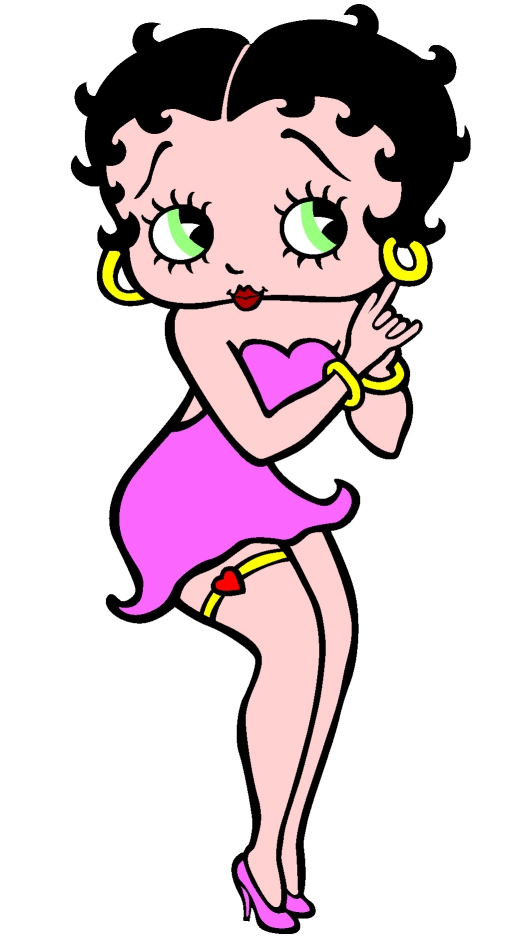

The character was modeled after a combination of Helen Kane, the famous popular singer of the 1920s and contract player at Paramount Pictures (the studio that distributed Fleischer's cartoons), and Clara Bow, who was a popular actress in the 1920s. She made her debut on 8 August 1930 in "Dizzy Dishes," the sixth installment of the Talkartoon series. Oddly, Betty Boop began life as a dog, but by 1930 she had evolved into a coy flapper whose innocent skirt-lifting and curvaceous outfits were sweetly suggestive of more than just singing and dancing. This cutie was developed by Max Fleischer for Paramount Studio's Talkartoons cartoon series. He leaps in to save Betty, struggling with the ringmaster, who loads him into a cannon and fires it.Betty Boop was the first cartoon sex symbol. Betty pleads with the ringmaster to cease his advances, as she sings " Don't Take My Boop-Oop-A-Doop Away." Koko the Clown is practicing his juggling outside the tent, and overhears the struggle inside. This is perhaps one of the earliest portrayals of sexual harassment on the animated screen, and was very daring at a time when such subject matter was considered taboo. As Betty returns to her tent, the ringmaster follows her inside and sensually massages her legs, surrounds her, and threatens her job if she doesn't submit. The villainous ringmaster lusts for Betty as he watches her from below, singing "Do Something," a song previously performed by Helen Kane. In Boop-Oop-a-Doop, Betty is a high-wire performer in a circus. Bimbo comes to her rescue, and she is saved before anything happens. When she rejects him, he pulls her out of the ropes, drags her off to the bedroom and says, "I will have you." The bed, however, runs away and Betty calls for help through the window. In Chess-Nuts, the Black King goes into the house where Betty is and ties her up. This suggested the combination of girlishness and maturity that many people saw in the flapper type, which Betty represented.Īttempts to compromise her virginity were reflected in Chess-Nuts (1932) and most importantly in Boop-Oop-a-Doop (1932). She was drawn with a head more similar to a baby's than an adult's in proportion to her body. There was, however, a certain girlish quality to the character. This was repeated in her first cameo appearance in Popeye the Sailor (1933). In Betty Boop's Bamboo Isle, she does the hula wearing nothing but a lei, strategically placed to cover her breasts, and a grass skirt.

In her cartoons, male characters frequently try to sneak peeks at her while she's changing or simply going about her business. Betty Boop wore short dresses, high heels, a garter, and her breasts were highlighted with a low, contoured bodice that showed cleavage. Many other female cartoons were merely clones of their male co-stars, with alterations in costume, the addition of eyelashes, and a female voice. Other female cartoon characters of the same period, such as Minnie Mouse, displayed their underwear or bloomers regularly, in the style of childish or comical characters, not a fully defined woman's form. Betty Boop was unique among female cartoon characters because she represented a sexualized woman.


 0 kommentar(er)
0 kommentar(er)
